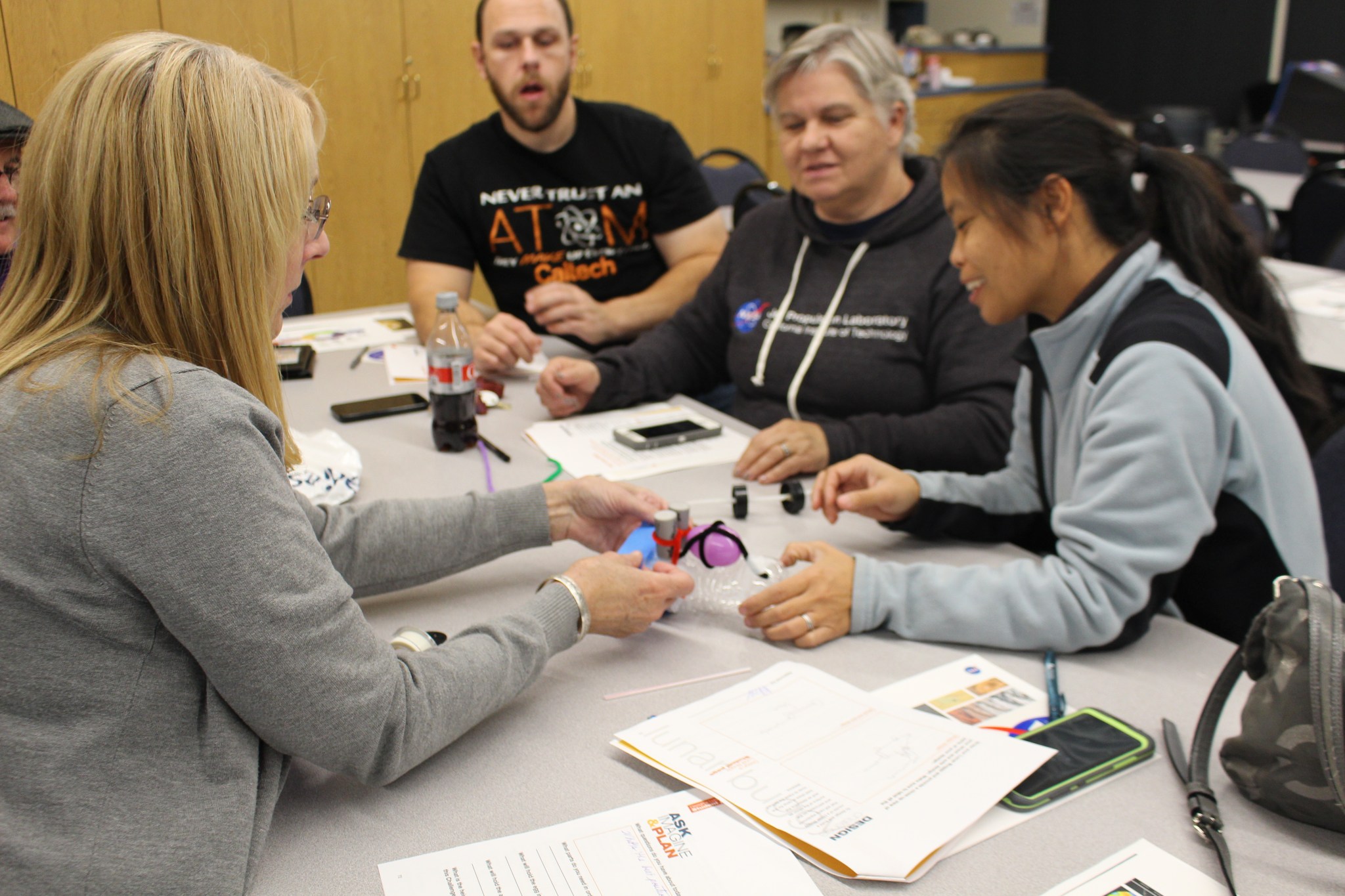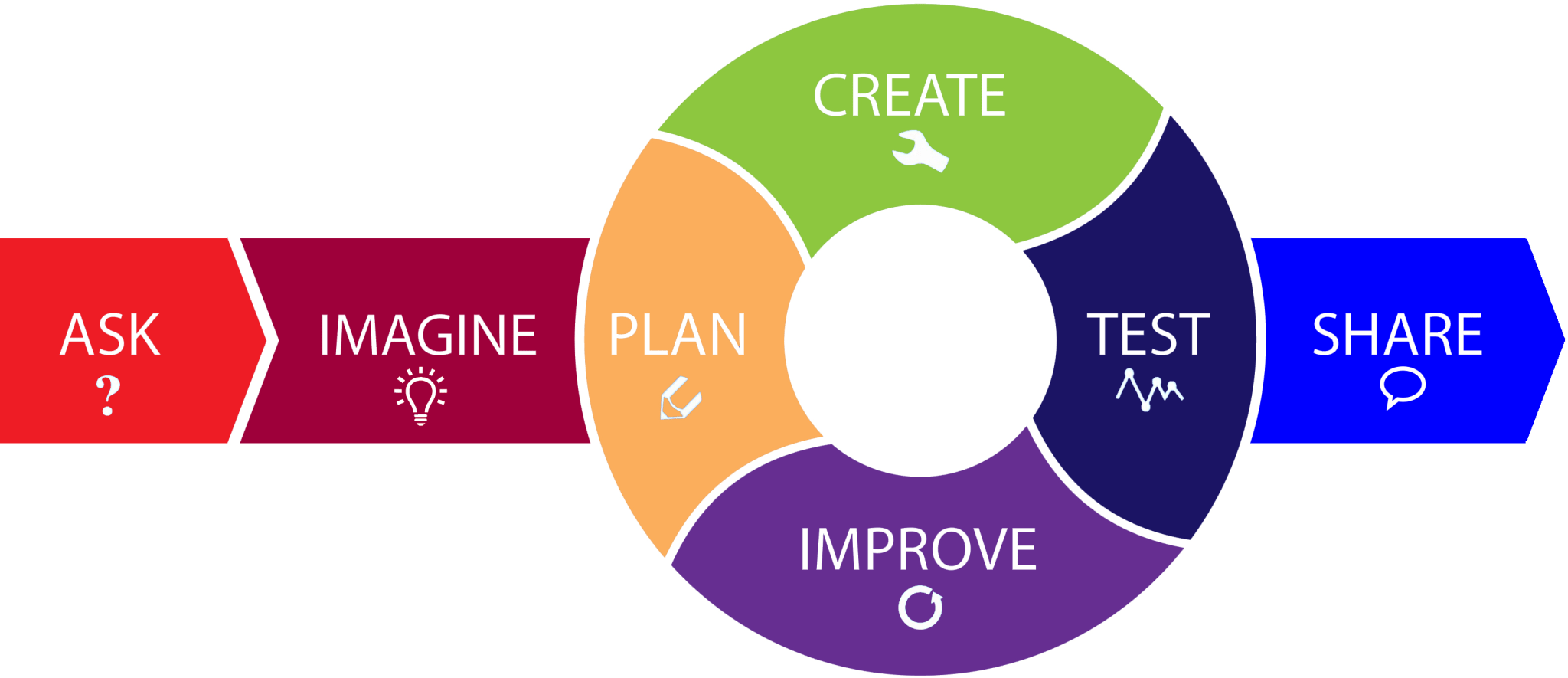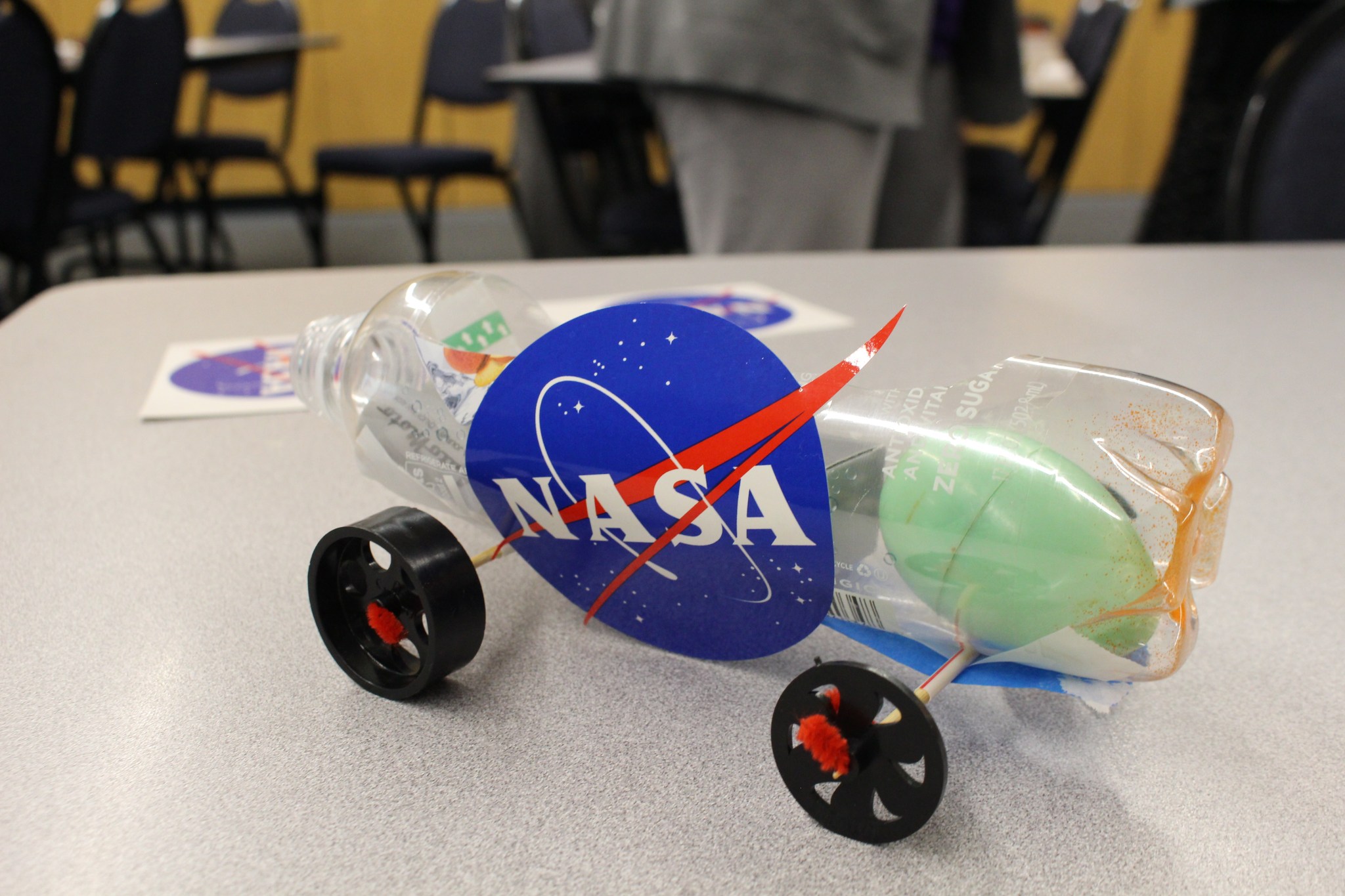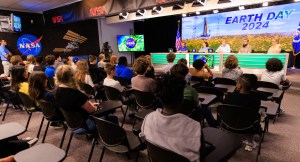A group of educators learned how to apply the Engineering Design Process into their classroom lessons and designed a lunar buggy at a workshop with NASA Armstrong Flight Research Center’s Office of Science Technology Engineering Math (STEM) Engagement.
Beginning Engineering, Science and Technology Program, also known as BEST, was developed by NASA’s Office of STEM Engagement to create activities for educators to incorporate in the classroom while using the Engineering Design Process. NASA began to integrate the model for engineers to use as a guide in problem solving.
One of the hardest steps of the process for students is following the plan step by step, according to Barbara Buckner, educator professional development specialist at the center’s STEM office.
“Elementary students are always eager to first ask questions and use their imagination rather than first creating a solution as you will find with most middle school and high school students,” Buckner said. “NASA’s BEST program is striving to remind STEM educators the importance for students in all grade levels to follow each step as real NASA engineers do every day.”
During the workshop, educators were challenged to design and build a model of a lunar buggy that will carry equipment and astronauts on the surface of the moon, as well as determine the best slope of ramp for the rover to travel the farthest distance. In order to complete this mission, educators were asked to follow the Engineering Design Process.
Buckner, oversaw each group and assigned specific roles for each member of the team to ensure everyone followed and completed each step. Educators had access to random supplies to create their buggy such as plastic bottles, straws, wheels and rubber bands.
Once each group completed the first three steps, a designated team member was able to collect the items needed to build the lunar buggy. As groups completed a lunar buggy, they conducted a test launch and incorporated any improvements needed for a successful launch.
“This was an amazing experience to plan and create the lunar buggy. The challenge engaged all teachers, just the way it will inspire their students,” said Knight High School teacher Ann Kerr from Palmdale, California.
At the end of the workshop, each group shared their results and discussed the benefits of incorporating the Engineering Design Process inside the classroom.
Future workshops from NASA Armstrong’s Office of STEM Engagement are planned to include the following themes: Explore Tech: Makerspace and X-Planes, Explore Earth: Sally Ride EarthKAM with Art and the Cosmic Connection, Explore Tech: Robotics and the Engineering Design Process and Explore Humans in Space: Space Food and Nutrition.

































